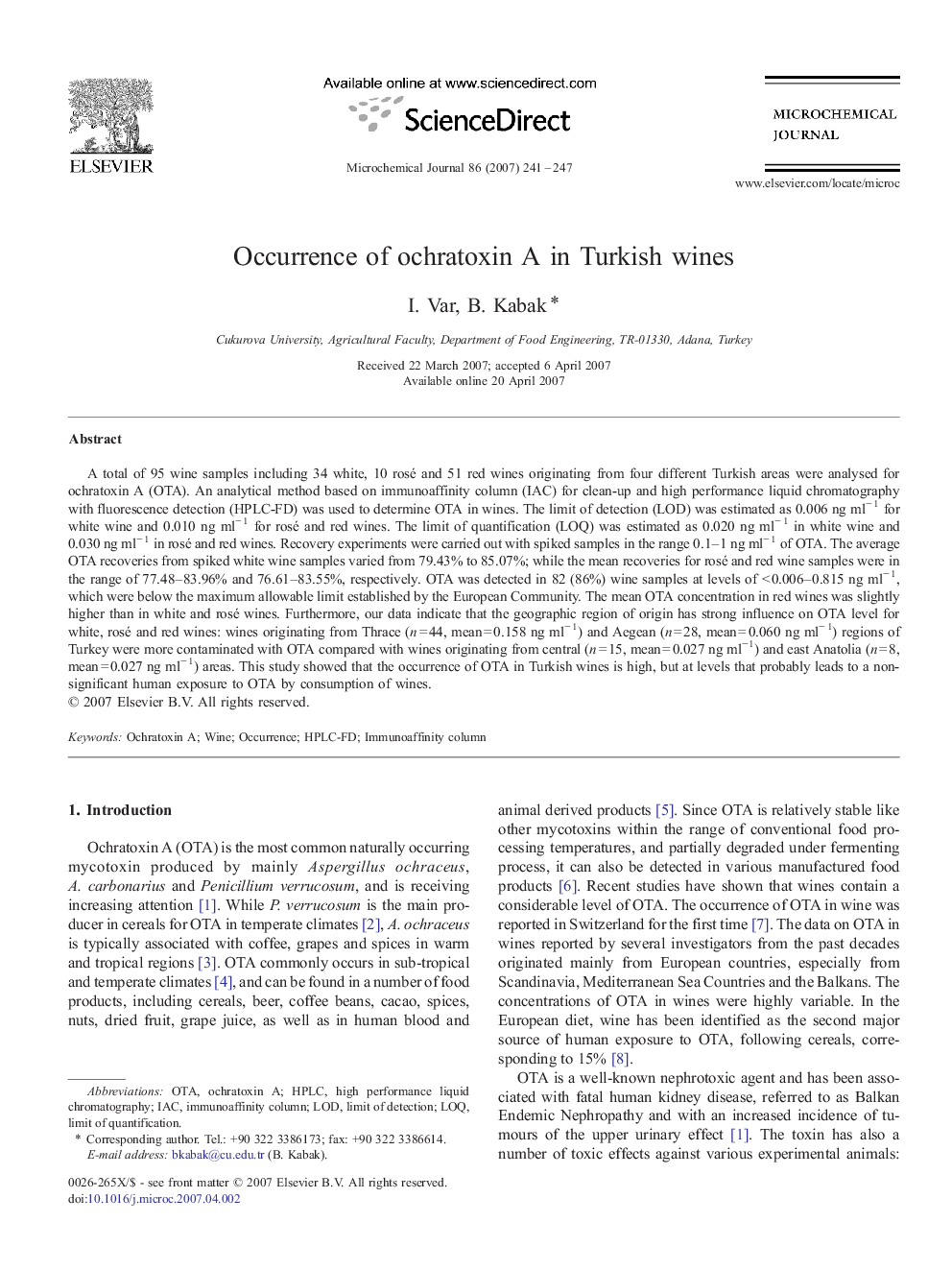| Article ID | Journal | Published Year | Pages | File Type |
|---|---|---|---|---|
| 1228368 | Microchemical Journal | 2007 | 7 Pages |
Abstract
A total of 95 wine samples including 34 white, 10 rosé and 51 red wines originating from four different Turkish areas were analysed for ochratoxin A (OTA). An analytical method based on immunoaffinity column (IAC) for clean-up and high performance liquid chromatography with fluorescence detection (HPLC-FD) was used to determine OTA in wines. The limit of detection (LOD) was estimated as 0.006 ng mlâ 1 for white wine and 0.010 ng mlâ 1 for rosé and red wines. The limit of quantification (LOQ) was estimated as 0.020 ng mlâ 1 in white wine and 0.030 ng mlâ 1 in rosé and red wines. Recovery experiments were carried out with spiked samples in the range 0.1-1 ng mlâ 1 of OTA. The average OTA recoveries from spiked white wine samples varied from 79.43% to 85.07%; while the mean recoveries for rosé and red wine samples were in the range of 77.48-83.96% and 76.61-83.55%, respectively. OTA was detected in 82 (86%) wine samples at levels of < 0.006-0.815 ng mlâ 1, which were below the maximum allowable limit established by the European Community. The mean OTA concentration in red wines was slightly higher than in white and rosé wines. Furthermore, our data indicate that the geographic region of origin has strong influence on OTA level for white, rosé and red wines: wines originating from Thrace (n = 44, mean = 0.158 ng mlâ 1) and Aegean (n = 28, mean = 0.060 ng mlâ 1) regions of Turkey were more contaminated with OTA compared with wines originating from central (n = 15, mean = 0.027 ng mlâ1) and east Anatolia (n = 8, mean = 0.027 ng mlâ 1) areas. This study showed that the occurrence of OTA in Turkish wines is high, but at levels that probably leads to a non-significant human exposure to OTA by consumption of wines.
Keywords
Related Topics
Physical Sciences and Engineering
Chemistry
Analytical Chemistry
Authors
I. Var, B. Kabak,
